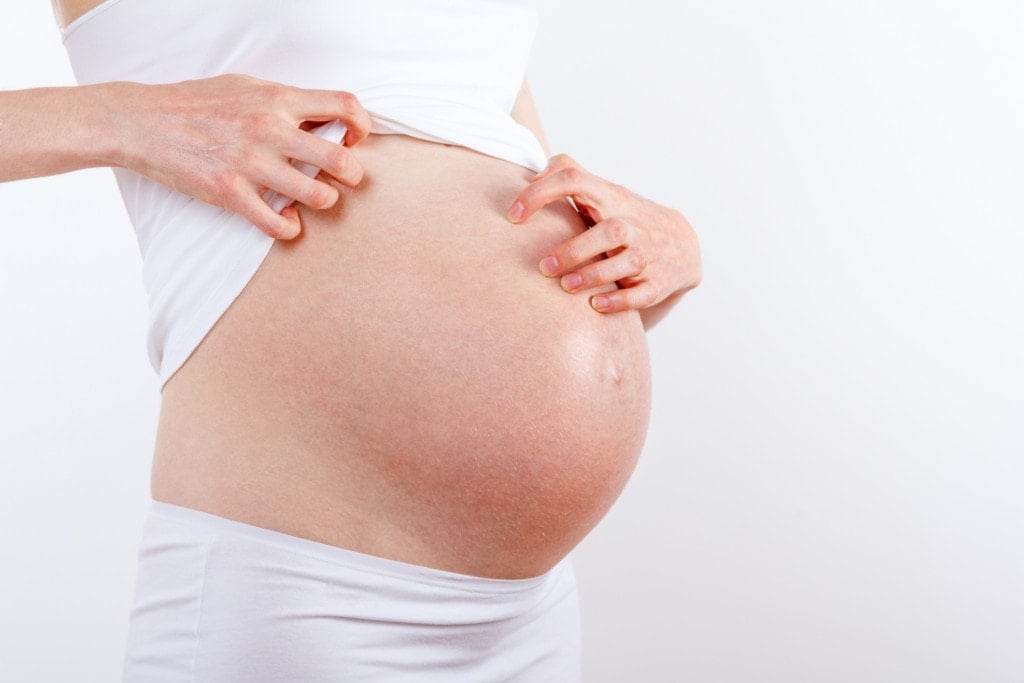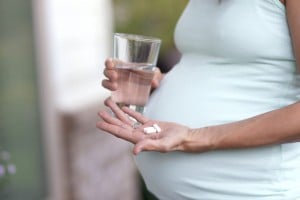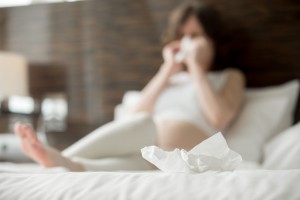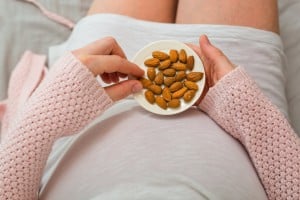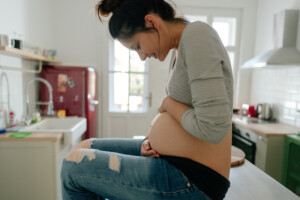You’re nearing the end of your pregnancy and feeling good. You survived the morning sickness, swelling, aches, pains, and discomforts. The light at the end of the tunnel is starting to show! Suddenly, you start to get itchy. You notice a large, painful rash across your abdomen, arms, or back. And it won’t go away! What in the world is happening? It turns out you have a pregnancy-induced rash called PUPPS. What is it, and how do you treat it? Here’s what you need to know.
What Is PUPPS or PUPPP?
Pruritic urticarial papules and plaques of pregnancy (aka PUPPS or PUPPP) is a pregnancy-induced rash. It’s known as polymorphic eruption of pregnancy in the United Kingdom, or PEP for short.1 PUPPS occurs in one out of 160 pregnancies.5
Not to be confused with other skin ailments such as acne, stretch marks, linea nigra, or pigmentation, PUPPS is associated with pregnancy and can begin as tiny red bumps around the navel and progress to large painful, itchy patches across a mother’s entire body. Pregnant mamas have reported the rash on their breasts, arms, butt, and thighs. A distinguishing characteristic is that it typically surrounds but doesn’t affect the navel. In most cases, PUPPS appears around week 35 of pregnancy.5
What Are the Symptoms?
The rash first happens when you’re pregnant and typically appears during the third trimester. It initially shows up on the abdomen and later spreads to other body parts. Here are the PUPPS symptoms to look out for:5
- Tiny, red bumps
- Itchy, red patches
- Rash that looks like eczema
- Blistering
- Severe itchiness
What Causes PUPPS?
The cause of PUPPS is currently unknown. Your healthcare provider usually diagnoses it by the process of elimination once they rule out other skin conditions. The traditional medical community has proposed placental products, hormonal alterations, and damage to connective tissue as possible causes. The naturopathic community has also suggested the following probable causes of PUPPS:7
Overly Stressed Organs
Symptoms exhibit as skin rashes and discolorations when your liver or kidney is overworked. Your liver is your body’s primary detox organ, and the kidneys filter your blood. When you combine the added weight of supporting another life inside you with toxins already present in food, beauty products, household products, and the environment, your body’s organs can get overwhelmed.3,10
Abdominal Stretching
Carrying multiple or large babies or simply putting on excess weight can stress your skin and damage connective tissue. This can lead to inflammation and eventually PUPPS.7
Fetal Cells
Your baby’s cells migrate to different body parts during pregnancy, including your heart and skin. This can offer protective benefits from certain diseases and trigger your skin to see these cells as foreign invaders. If this happens, a rash may result.4
What Are the Treatments for PUPPS?
Here are some treatments for PUPPS:
Exercise
Gentle, consistent exercise helps keep your blood clean and your organs healthy.3
Clean Foods
Eating clean, organic, and plant-based foods supports healthy liver and kidney function, which can eliminate rashes. Stay away from processed foods and artificial ingredients. Drink lots of water and green juices. Add natural detoxifiers like arugula to your next salad or make fresh juice drinks.3
No Toxins
While it sounds obvious, it’s easy to forget that many beauty and household products contain harmful chemicals. Although it may be in small doses, it adds up. Toxins from makeup and cleaning products can absorb into your body through the skin or inhalation.9 Opt for beauty, hair, cleaning, gardening, and laundry products with minimal or no toxins.
Herbal Remedies
Under the direction of a professional such as an herbalist, naturopath, or midwife, blood-purifying herbs such as nettle, dandelion root, and beet juice can help flush toxins out of your body.10 But remember, it’s essential to have the direction of your healthcare provider to know how much to consume when you’re pregnant.
Topical Creams
Treatment consists of topical or oral corticosteroids.8 You can use antihistamines and topical steroids to treat PUPPS and systemic corticosteroids for extreme cases.2 Consult your healthcare provider for specific recommendations.
Soothing Baths
Soaking in an oatmeal bath or Grandpa’s Old Pine Tar Soap has been reported to help relieve itchiness associated with PUPPS.5 This soak will help calm and moisturize irritated skin. In small doses, other ingredients to add to your bath include calendula, Chinese skullcap, apple cider vinegar, and chamomile.
Light, Cotton Clothing
Wear lightweight, cotton clothing that won’t irritate or inflame your skin. Consider switching to a non-toxic, hypoallergenic laundry detergent designed specifically for sensitive skin.
Is PUPPS Harmful?
No, PUPPS is not life-threatening to you or your baby. It can, however, add stress, anxiety, and discomfort to your pregnancy experience. It’s a symptom of a bigger issue, but luckily there are ways to support your organs to function better. There are also many ways to soothe itchy skin from PUPPS (see What Are the Treatments for PUPPS?).6
When Will It Go Away?
The PUPPS skin condition usually appears in the third trimester, and some mamas develop it shortly after delivery. However, PUPPS will disappear a few weeks after delivery in most cases.5

